The Sport of Kings and Queens
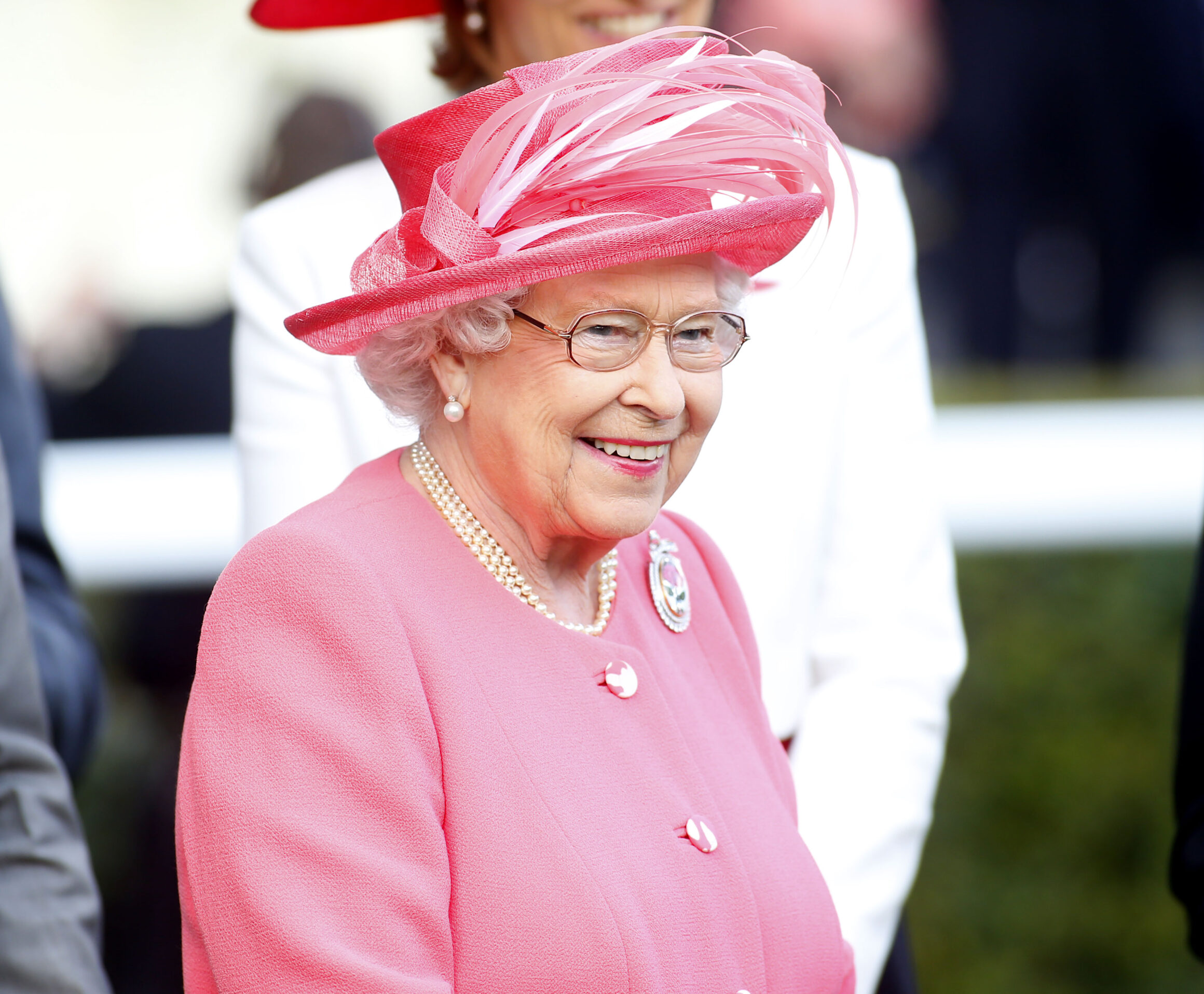
Her Majesty Queen Elizabeth II has had a long and enthusiastic involvement with the turf, as an owner and a breeder. Alongside her customary participation at Royal Ascot, she has regularly attended the Derby. The 243rd running of the Epsom Classic on 4 June will be a highlight of the Platinum Jubilee weekend celebrations.
The Queen has never won the Derby, though she came close in her Coronation Year, 1953, with Aureole, second behind the winner, Pinza, who provided celebrated jockey Sir Gordon Richards with his first – and only – winner of the Classic on his 28th attempt.
The Queen’s great grandfather did win the Derby while Prince of Wales, first with Persimmon in 1896, and then in 1900 with a horse named to commemorate the 60th year of his mother Queen Victoria’s reign, Diamond Jubilee.
Diamond Jubilee also won the 2,000 Guineas and St Leger, to complete the Triple Crown, giving the Prince of Wales the unique distinction of being the only member of the Royal Family to own a Triple Crown winner. And for good measure, he also owned that year’s Grand National winner, Ambush II.

Diamond Jubilee wins the 1900 Derby at Epsom
After ascending to the throne as King Edward VII, he won the 1909 Derby with Minoru, becoming the first and thus far only reigning monarch to win the Derby.
Of course, Royal patronage of the turf goes back a lot further than that. King Charles II was instrumental in making Newmarket the headquarters of racing. Newmarket’s Rowley Mile course is named after him, as his nickname was ‘Old Rowley’.
Ascot itself owes its existence to Queen Anne, who founded racing there in 1711 and is commemorated today by the Queen Anne Stakes, the traditional opening race of Royal Ascot.
Prior to inheriting the throne as King George IV, the Prince of Wales owned the 1788 Derby winner Sir Thomas. He indulged his passion on an extravagant scale; if he saw a horse he liked, he bought it, regardless of price.
The Prince’s association ended abruptly – albeit temporarily – in 1791 following a notorious episode known as the ‘Escape affair’. His horse Escape, ridden by Sam Chifney, finished last in a four-horse race at Newmarket when odds-on favourite, then ran again the next day, this time winning easily at odds of 5-1 and beating two of the horses from the previous day’s race.
After interviewing the jockey and not being satisfied with his explanation, the Newmarket stewards informed the Prince that if Chifney rode his horses again at Newmarket, “no gentleman would start against him.” The Prince stood by Chifney, severed his links with Newmarket and vowed never to set foot there again.
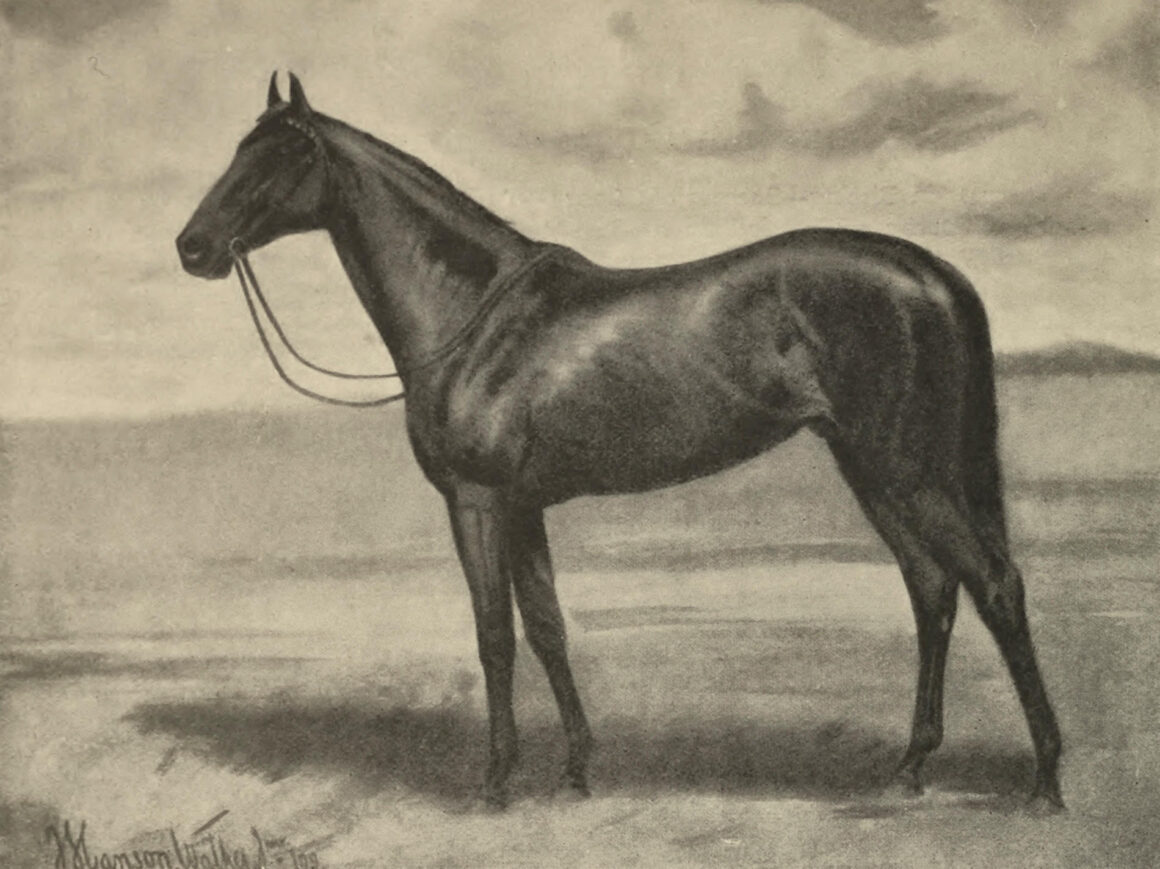
Minoru, winner of the 1909 Derby and owned by King Edward VII
In 1825 King George IV initiated the Royal Procession at Ascot. On the Tuesday of the meeting, the King arrived in a dark green coach pulled by four horses, giving birth to a tradition maintained to this day.
Queen Victoria showed little interest in racing, but her eldest son certainly made up for her lack of enthusiasm, both as Prince of Wales and King Edward VII.
George V was not as keen on racing as his father but he did achieve a Classic success as the owner of 1928 1,000 Guineas winner Scuttle.
The Queen’s father, George VI, won four of the five wartime substitute Classic races in 1942, landing the 2,000 Guineas with Big Game and the 1,000 Guineas, Oaks and St Leger with Sun Chariot. Only the Derby eluded him.
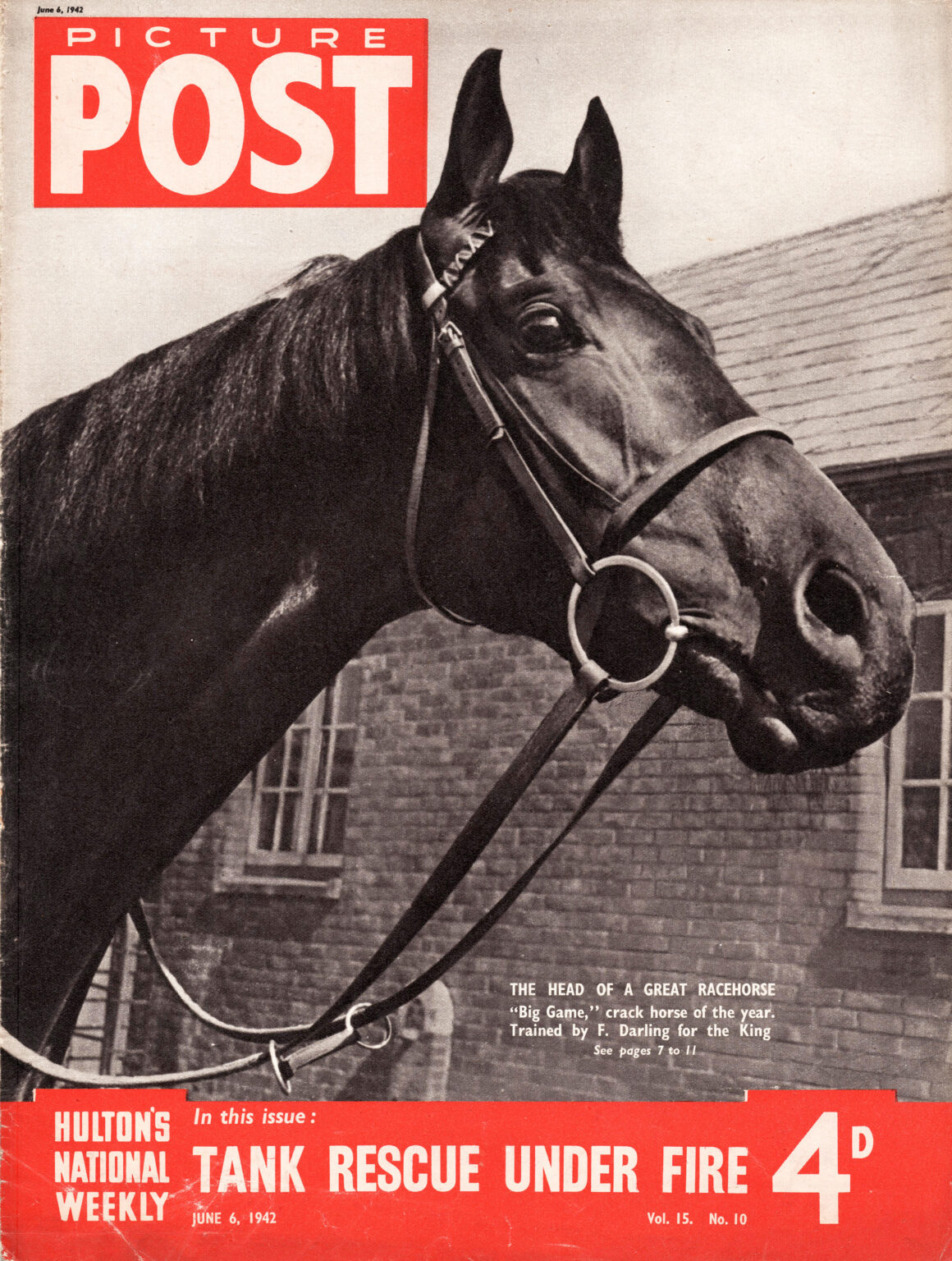
Big Game, a prolific horse for King George VI
As Princess Elizabeth, the Queen had her first winner when Monaveen landed a steeplechase at Fontwell Park in Sussex on 10 October 1949. She owned Monaveen in partnership with her mother the Queen (later to become Queen Elizabeth the Queen Mother) but the horse carried the Princess’s colours of scarlet, purple hooped sleeves and black cap, a variation of the King’s racing silks. On the last day of 1949 the Princess saw Monaveen win the Queen Elizabeth Chase at the now-defunct Hurst Park racecourse.
It was Flat racing rather than jumping that was to become the Queen’s passion, however. When she married Prince Philip in 1947, the Aga Khan gave her a filly as a wedding present which she named Astrakhan. When Astrakhan won a race at Hurst Park in April 1950, it was the only time the colours of Princess Elizabeth were successful in a Flat race.
Monaveen and Astrakhan were the only two horses to carry the Princess’s colours to victory. Following the King’s death in 1952, she inherited the famous royal colours of ‘purple, gold braid, scarlet sleeves, black velvet cap with gold tassel’.
While the court was in mourning the Queen’s horses carried the colours of the Duke of Norfolk. Her first winner as Queen was Choir Boy at Newmarket but his jockey wore the Duke’s colours of sky blue with a red quartered cap. The first to carry the Queen’s silks to victory was Stream Of Light in the Lancashire Oaks at Manchester on 7 June 1952.
Choir Boy, ridden by Doug Smith, gave the Queen her first Royal Ascot victory in the 1953 Royal Hunt Cup. That launched a spell of seven winners at Royal Ascot during the first two years of her reign.
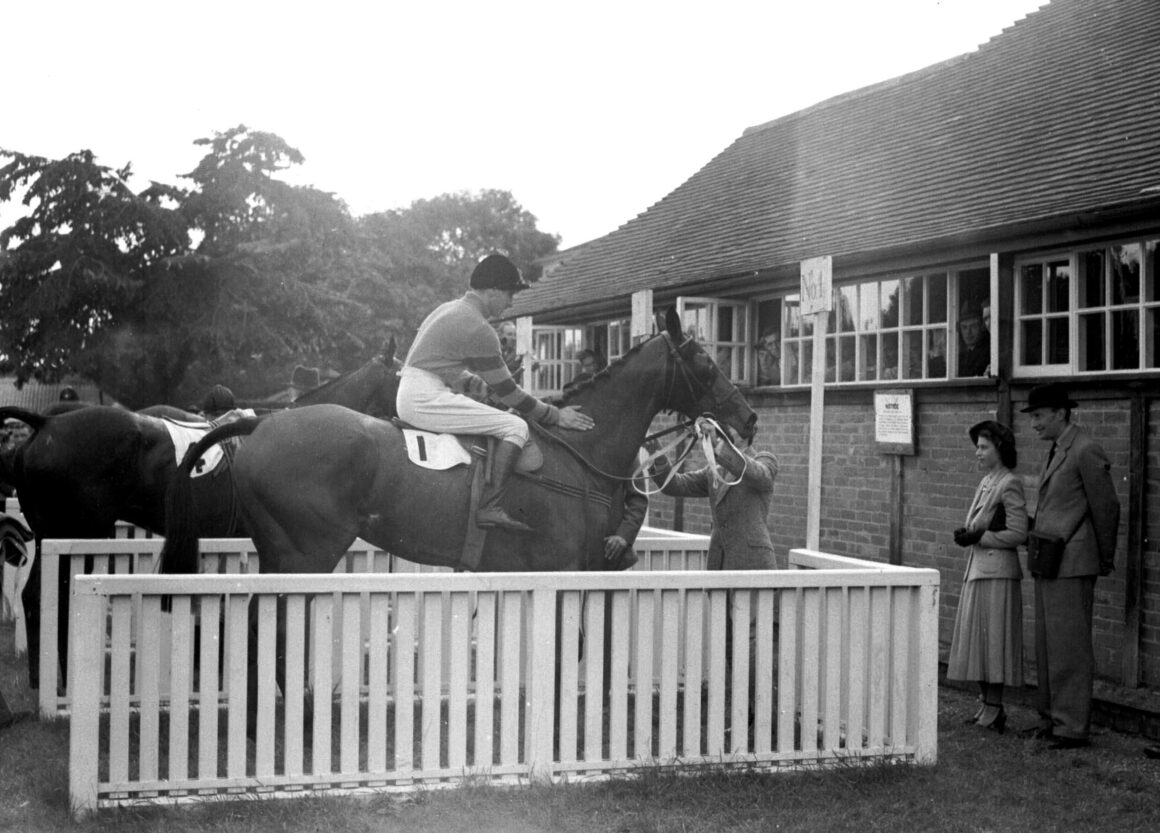
Monaveen, Her Majesty The Queen’s first ever racecourse winner at Fontwell Park
The Queen’s horses have entered Royal Ascot’s winner’s enclosure a total of 23 times, her most recent winner being Tactical in the 2020 Windsor Castle Stakes. Of those, none was more popular than the filly Estimate, who, having won the Queen’s Vase there the year before, stormed home under jockey Ryan Moore in the 2013 Gold Cup. This was the first Gold Cup success for a reigning monarch in Royal Ascot’s flagship race, first run in 1807.
Although she has yet to win the Derby, the Queen has won each of the other four Classic races. Corrozza, partnered by Lester Piggott, provided her with her first Classic success with a short-head victory in the 1957 Oaks at Epsom. It was the first royal-owned Epsom Oaks winner since the race’s foundation in 1779. (King George VI had won a wartime Oaks at Newmarket.)
Her second classic winner followed a year later, 20-1 shot Pall Mall in the 2,000 Guineas.
In her Silver Jubilee year, 1977, the Queen’s filly Dunfermline added lustre to the celebrations by winning the Oaks and then later the St Leger, both times ridden by Willie Carson. Again, it was the first time that a reigning monarch had won the St Leger at its traditional home of Doncaster. Just 40 minutes after her St Leger triumph, Dunfermline’s year-younger half-sister Tartan Pimpernel made it a royal occasion to remember by winning Doncaster’s May Hill Stakes.
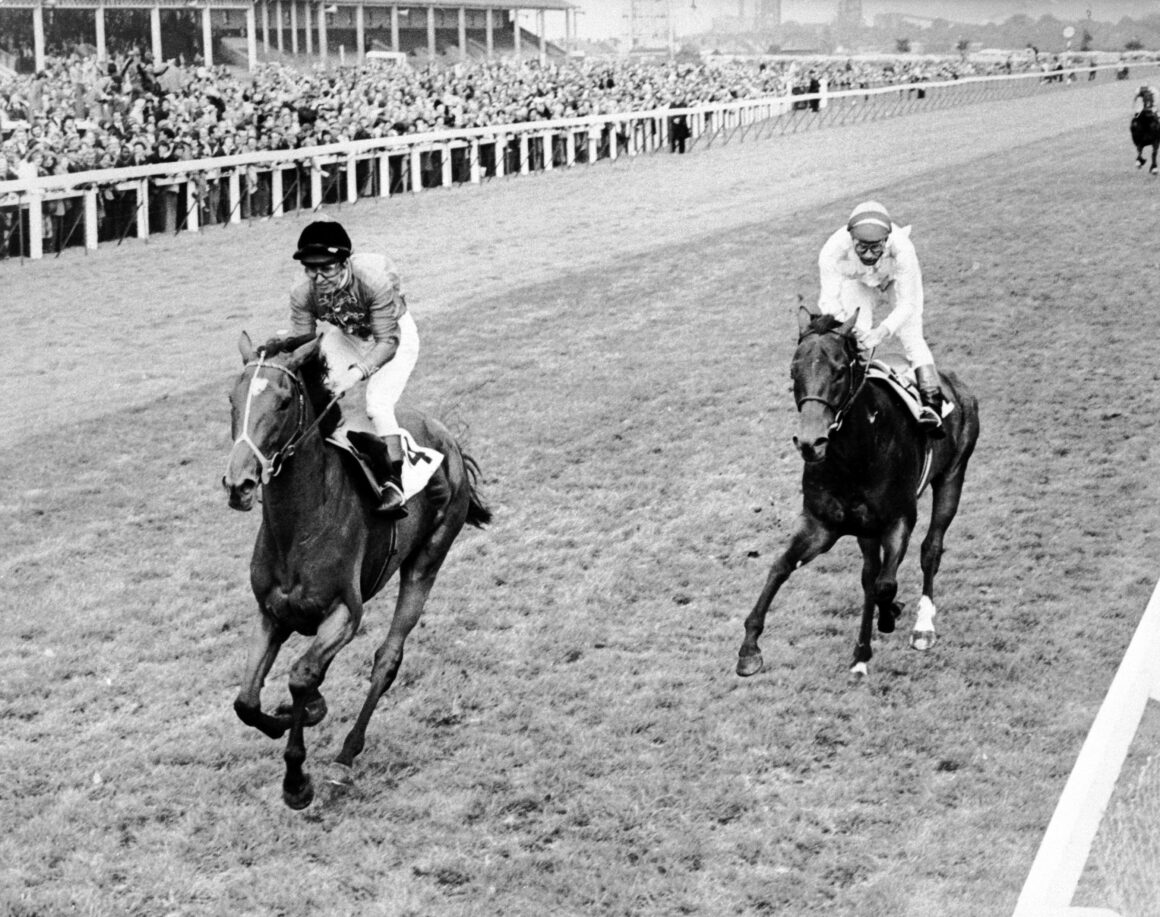
Dunfermline wins the St Leger at Doncaster Racecourse for Her Majesty The Queen
The Queen is said to name all of her horses herself, and many of them are quite clever. Among them is Canisbay, winner of the 1965 Eclipse Stakes. Canisbay was a son of the Queen’s stallion Doutelle out of a mare named Stroma. Canisbay overlooks the Isle of Stroma, in the Pentland Firth off the north-east coast of Scotland between John o’ Groats and the Orkneys. The Queen Mother attended services at Canisbay church when staying at her Scottish home, the Castle of Mey.
Another example was Charlton, winner of the 1971 Henry II Stakes. Born in 1967, the year after England’s World Cup triumph, he was named after the brothers Jack and Bobby Charlton. The horse’s dam (mother) was named Ibrox, home of Glasgow Rangers, and her father was called Big Game.
The Queen’s 1974 1,000 Guineas winner Highclere was named simply after the stud where she was foaled. Highclere followed her Guineas victory by giving her owner her greatest success on foreign soil with a hugely popular triumph in the Prix de Diane (the French Oaks) at Chantilly.
Highclere became the dam of Height Of Fashion, winner of the May Hill Stakes and Fillies’ Mile as a two-year-old, and who broke the course record when winning Newmarket’s Princess of Wales’s Stakes at three. More importantly, however, Height Of Fashion was sold for £1.2 million to Sheikh Hamdan Al Maktoum and went on to produce the great champion racehorse Nashwan, winner of the 2,000 Guineas, Derby, Eclipse and King George VI and Queen Elizabeth Stakes in the summer of 1989.
That same year, the Queen’s colt Unknown Quantity provided her with a rare American triumph by winning the Arlington Handicap at Arlington Park in Chicago.
Ten years later, it was an American jockey, Gary Stevens, who steered the Queen’s Blueprint to a Royal Ascot success in the Duke of Edinburgh Handicap.
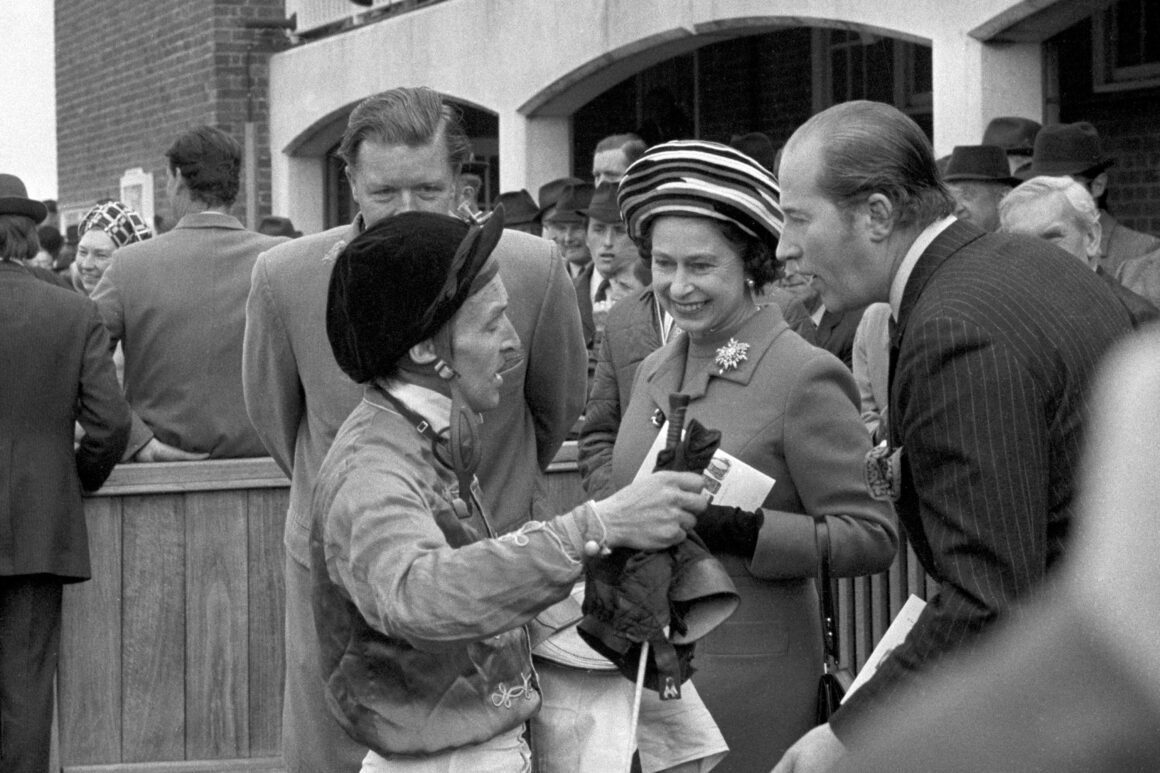
Joe Mercer debriefs Her Majesty The Queen after Highclere’s 1000 Guineas win
In addition to her successes on the international stage, she has attended many race meetings during her overseas tours. Among them, in 1959 she attended the 100th running of the Queen’s Plate at Woodbine in Toronto during her royal visit to Canada.
Such is the popularity and cachet of British racing, with its history of royal patronage, that Britain is seen as the leader in terms of racing and bloodstock, attracting international participation and has developed great enthusiasts for the sport around the globe.
In terms of big race wins, Aureole ranks with the very best. Although only able to finish second in the Derby two weeks before the Queen’s coronation, the following year he recorded victories in Epsom’s Coronation Cup, Royal Ascot’s Hardwicke Stakes and, on his final start, the King George VI and Queen Elizabeth Stakes. Those successes were pivotal in the Queen ending the 1954 season as leading owner for the first time. She headed the owners’ list again in 1957.
Aureole also proved a great success as a stallion and was the leading sire in 1960, when his son St Paddy won the Derby for owner Sir Victor Sassoon. He retained his leading sire crown in 1961. Among his most successful sons was Hopeful Venture, who in 1968 won Chester’s Ormonde Stakes and Newmarket’s Princess of Wales’s Stakes for his royal owner.
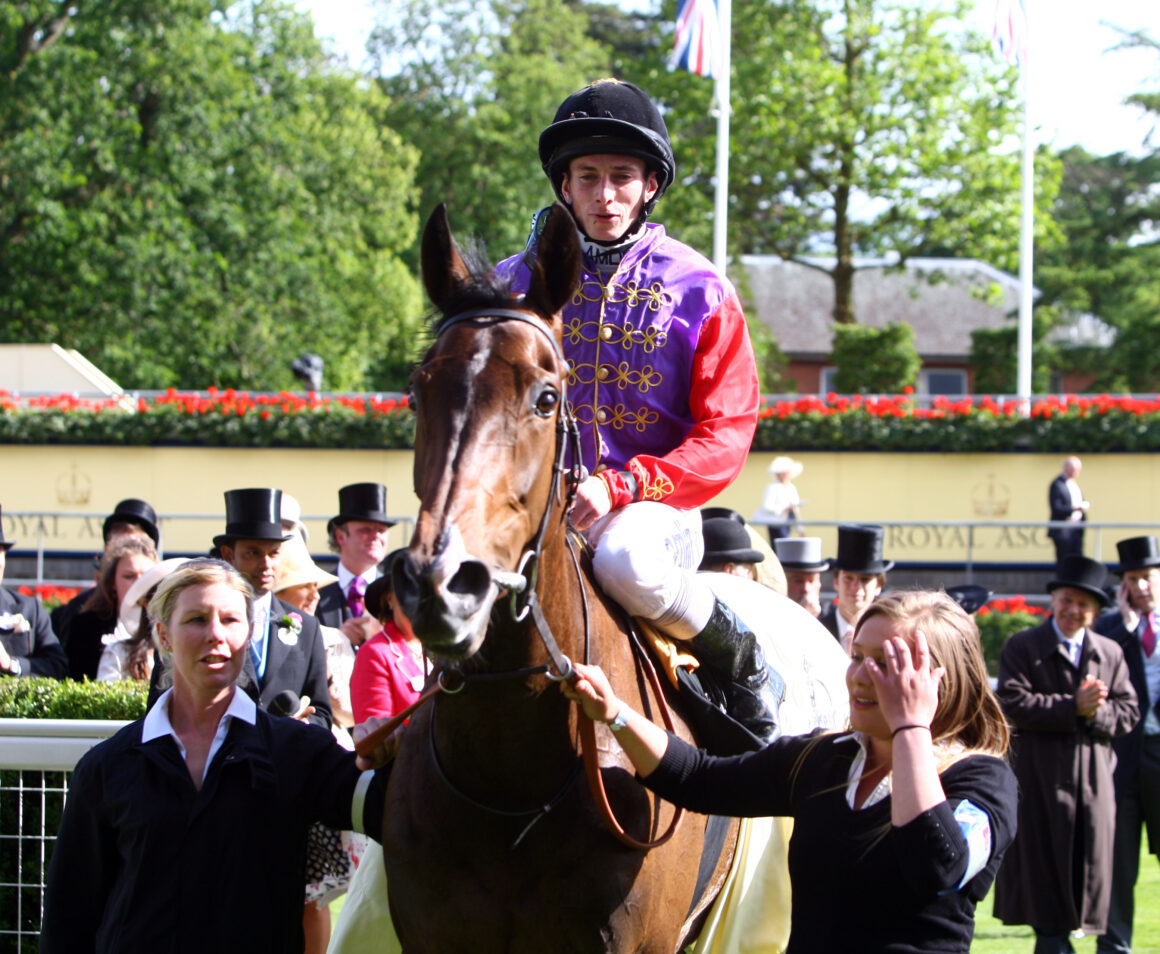
Her Majesy has enjoyed success at so many racecourses across the years (Estimate, pictured)
The Queen has enjoyed plenty of success with her long-distance ‘Cup’ horses. Estimate’s Ascot Gold Cup triumph is the undoubted highlight but there were plenty before her. They include Agreement, who won the Chester Cup and back-to-back runnings of the Doncaster Cup in 1958/59; Apprentice, winner of the Yorkshire Cup and Goodwood Cup in 1965; and Gaulois, who won the Goodwood Cup the following year.
In 2011 there was great anticipation that the Queen would finally achieve that coveted Derby winner. Carlton House won what is considered to be the strongest Derby trial, the Dante Stakes at York. Such was the weight of public affection and expectation that Carlton House was made the 5-2 favourite to end his owner’s Derby hoodoo. Sadly, it wasn’t to be. Having been hampered around halfway and forced to switch around other horses, Carlton House finished third, less than one length behind the winner Pour Moi.
Twelve months later, Carlton House looked like giving the Queen a prestigious victory in Royal Ascot’s Prince of Wales’s Stakes, only to be run out of it in the final furlong by the Aidan O’Brien-trained So You Think.
While she may not have a runner in this year’s Derby – her contender Reach For The Moon was recently ruled out of the race – there is every reason to believe she can look forward to more big race successes in the future.

